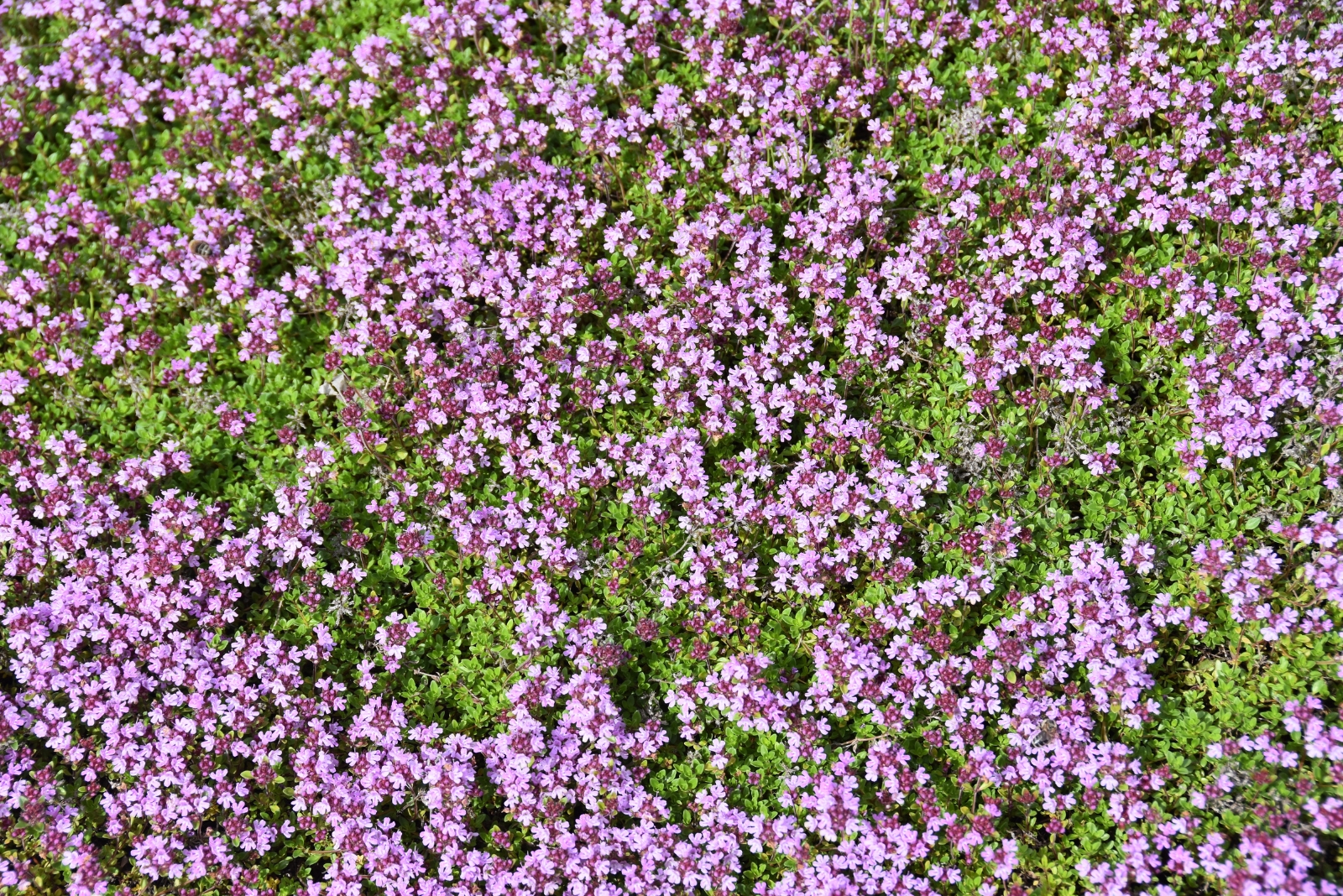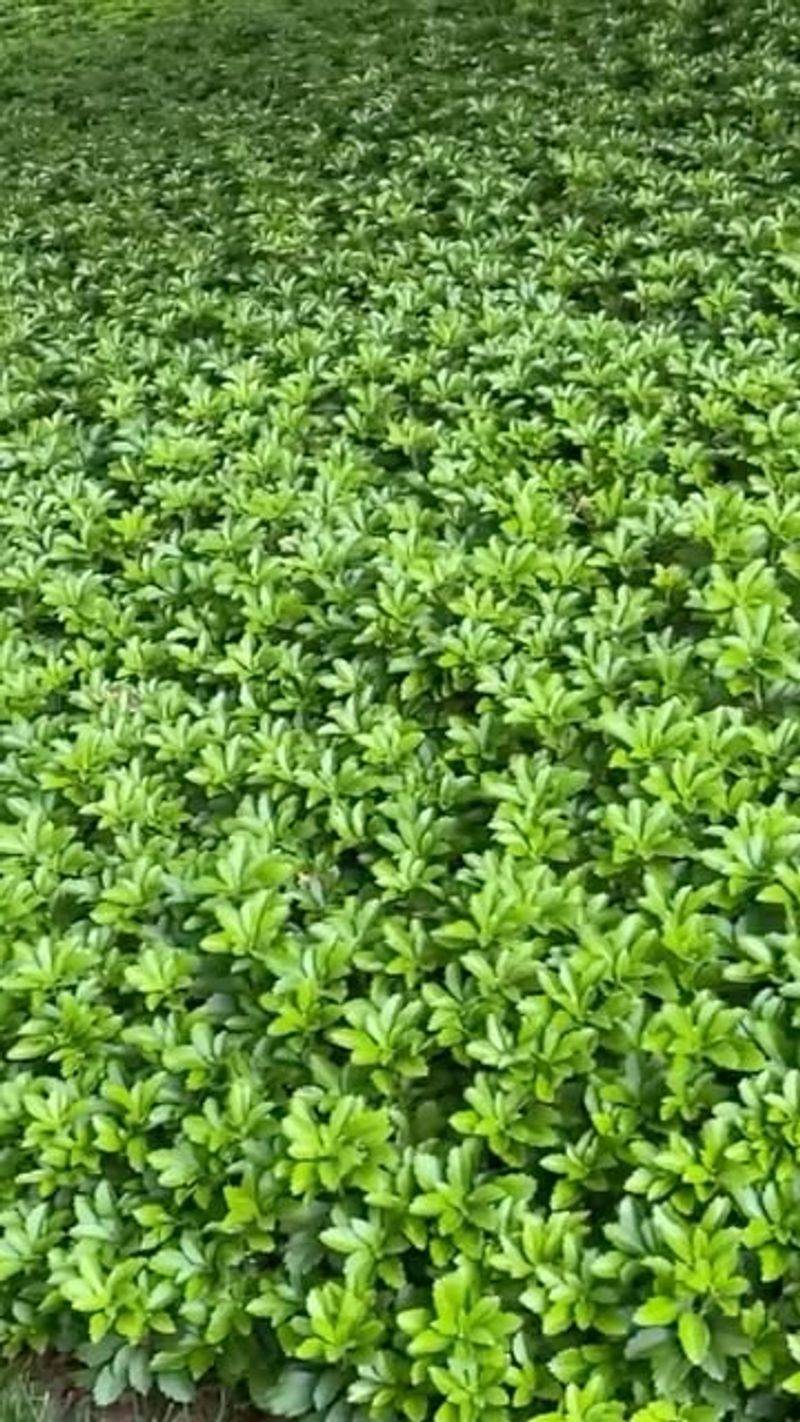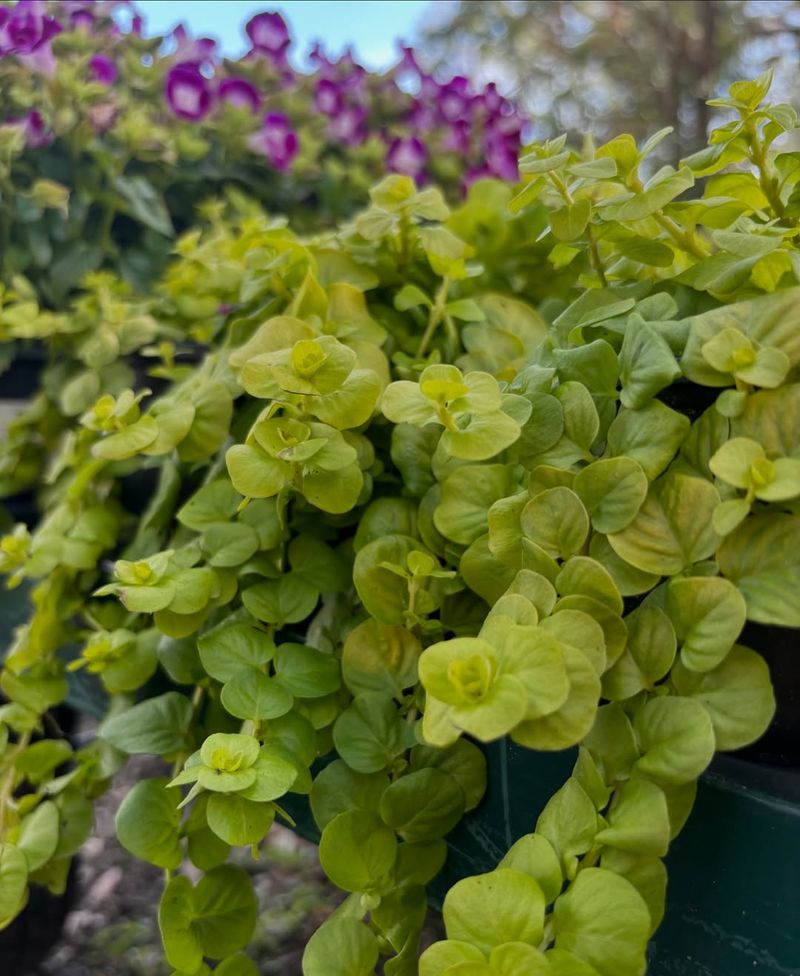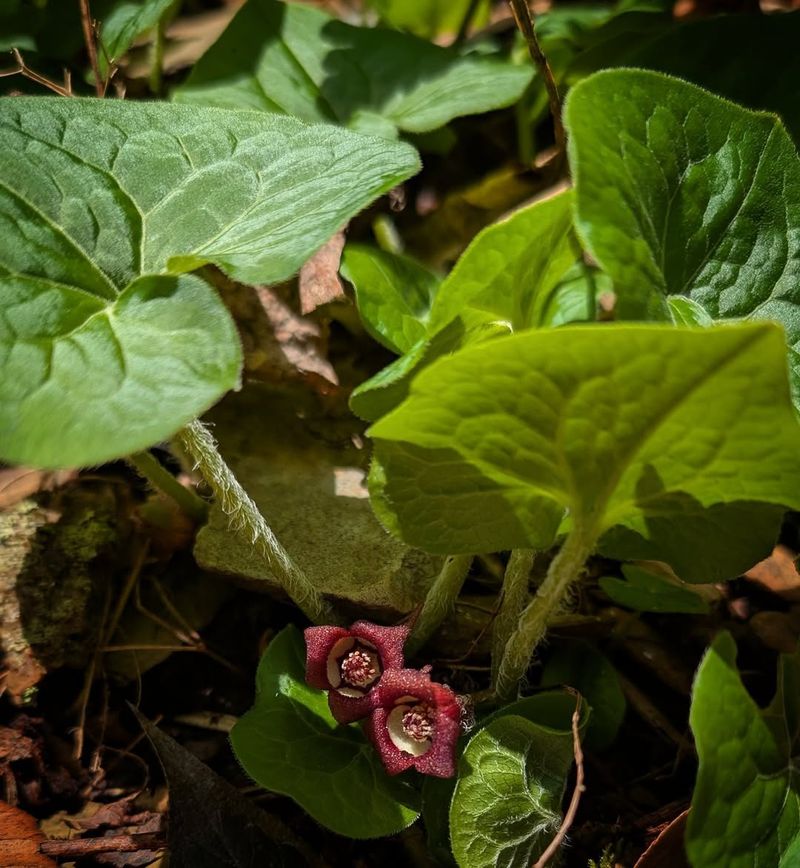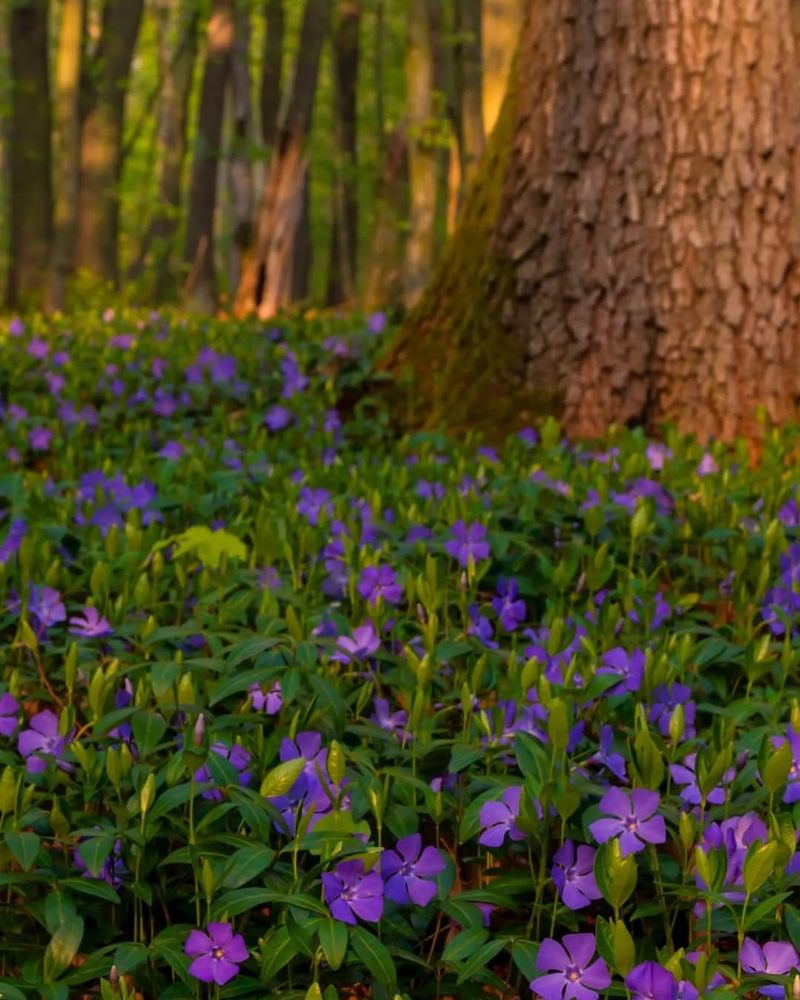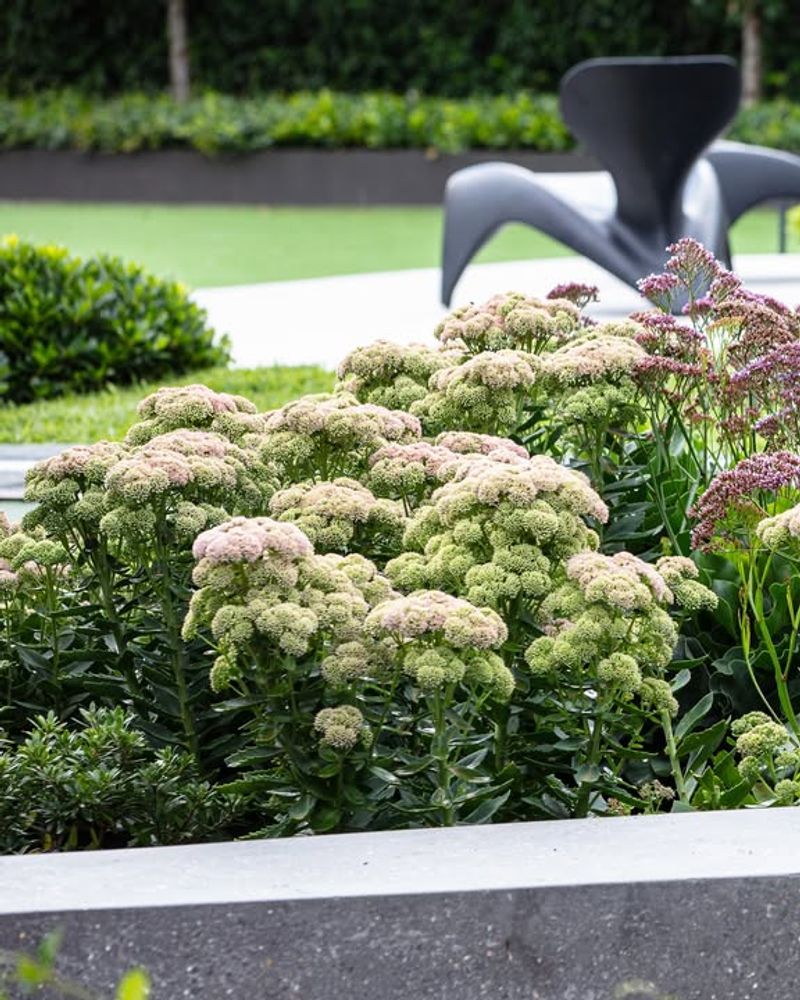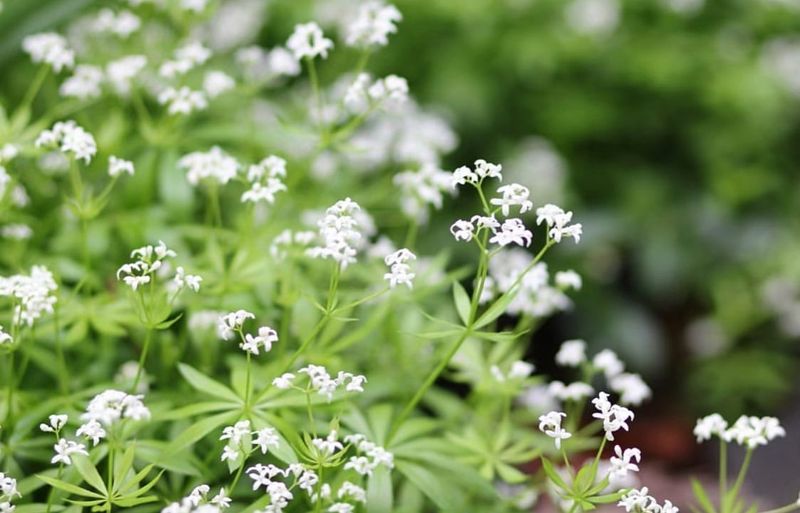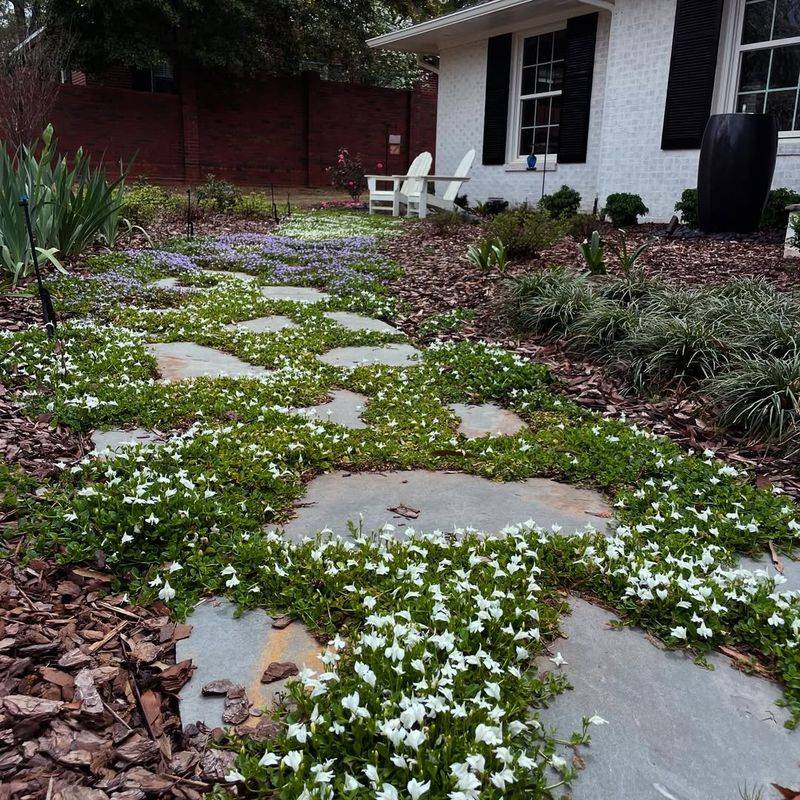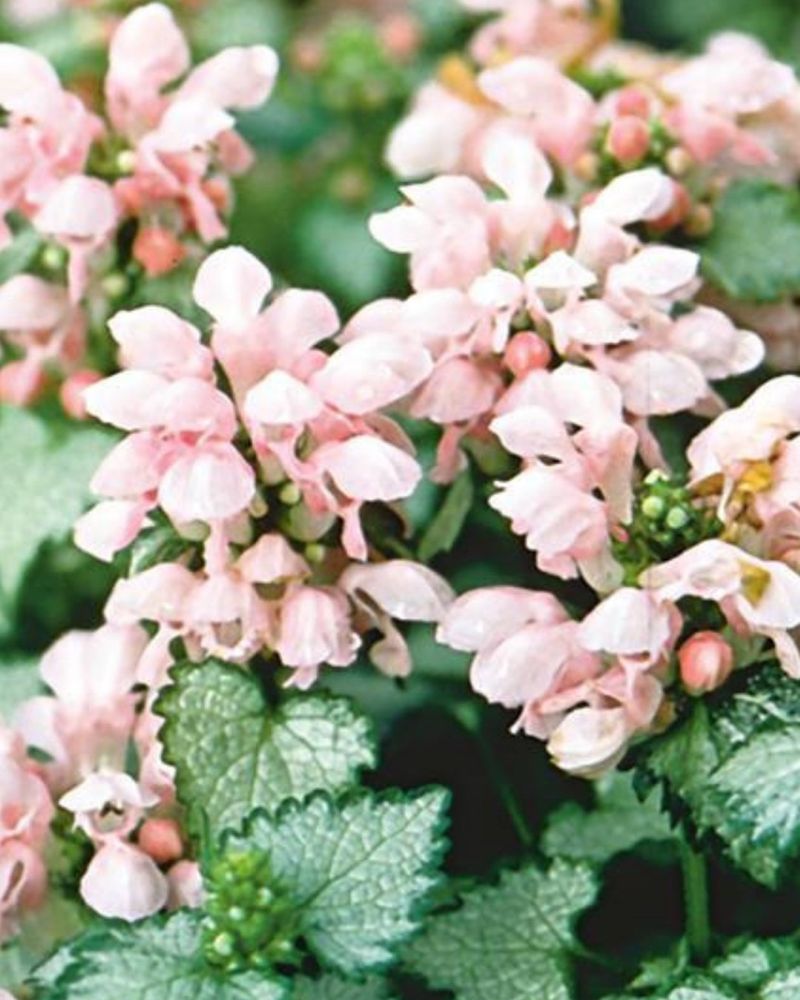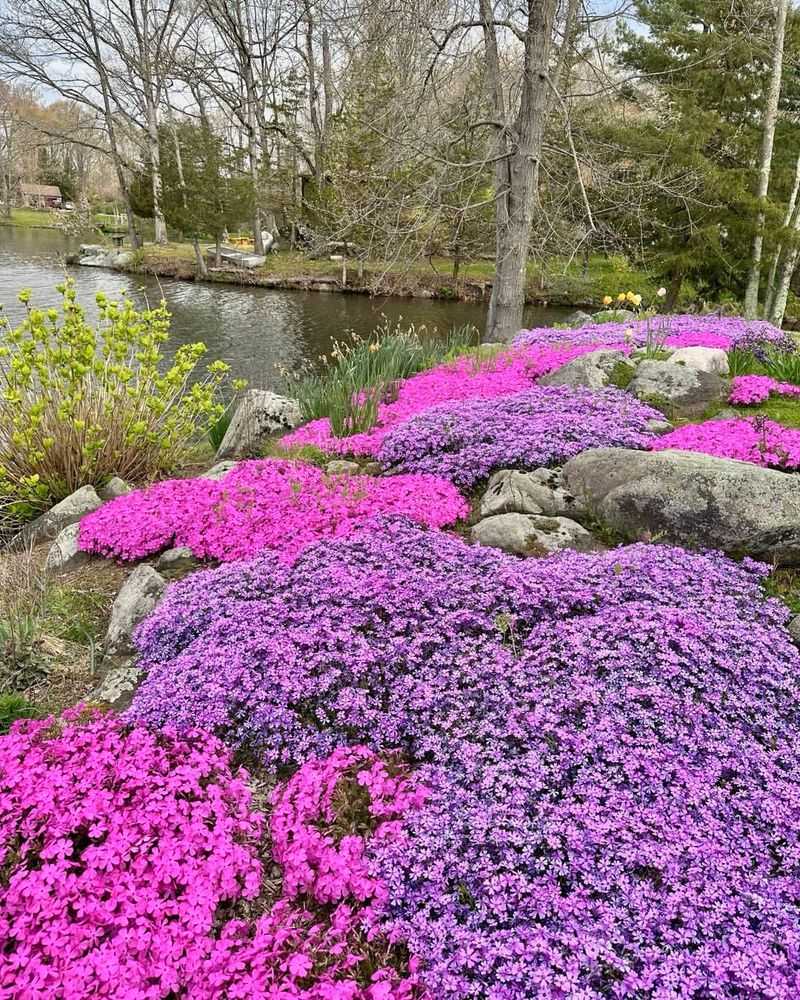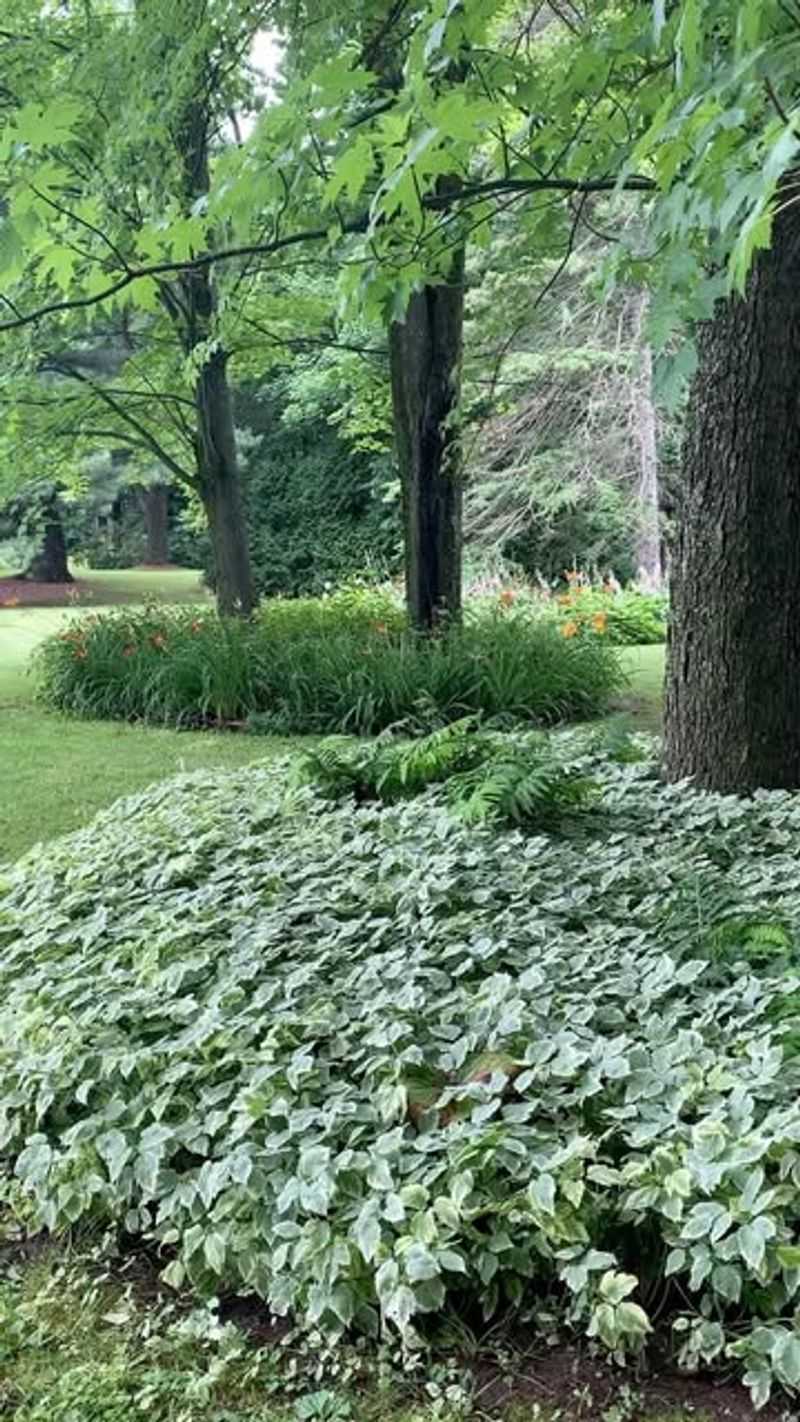Wisconsin gardeners know that bare spots in a yard can stick out like sore thumbs. I’ve tried quick fixes before, but the real trick is finding plants that spread fast and fill gaps naturally.
These ground covers don’t just grow—they take over with color, texture, and life. Once they settle in, those once-barren patches turn into lush, living carpets you’ll actually be proud of.
1. Creeping Thyme
Walking across this fragrant plant releases a wonderful herbal scent that makes gardening even more enjoyable. Creeping thyme thrives in Wisconsin’s climate and spreads rapidly to create a thick, weed-blocking carpet.
Tiny purple or pink flowers appear in summer, attracting bees and butterflies to your yard. It tolerates foot traffic surprisingly well, making it perfect for pathways between stepping stones.
Once established across bare spots, this hardy plant needs minimal watering and survives cold winters without any fuss.
2. Pachysandra
Shady areas in Wisconsin yards finally meet their match with this evergreen superstar. Pachysandra spreads through underground runners, quickly filling bare soil beneath trees where grass struggles to grow.
The glossy leaves stay green year-round, providing visual interest even during snowy months. Small white flowers bloom in spring, adding a delicate touch to shaded gardens.
Deer tend to avoid munching on it, which is a bonus for many Wisconsin homeowners dealing with wildlife visitors.
3. Creeping Jenny
Bright chartreuse leaves bring a pop of color that practically glows in both sun and partial shade. This vigorous spreader loves Wisconsin’s moist soil conditions and will quickly blanket bare spots with cheerful foliage.
Yellow cup-shaped flowers appear in early summer, creating a stunning display. Creeping Jenny works beautifully along pond edges or in rain gardens where moisture collects.
Its trailing habit makes it excellent for spilling over retaining walls or container edges too.
4. Wild Ginger
Native to Wisconsin forests, this woodland treasure feels right at home in shady yard spots. Heart-shaped leaves overlap to create a dense, attractive groundcover that naturally suppresses weeds.
Hidden beneath the foliage, unusual burgundy flowers bloom in spring, though they’re tucked close to the ground. Wild ginger spreads steadily through rhizomes, eventually forming substantial colonies.
It pairs beautifully with hostas and ferns in shade gardens, creating a naturalistic look that requires little maintenance once established.
5. Ajuga
Also called bugleweed, this colorful spreader offers more than just green coverage. Bronze, purple, or variegated leaves create visual interest throughout the growing season in Wisconsin gardens.
Striking blue, purple, or pink flower spikes shoot up in spring, creating a stunning carpet of color. Ajuga tolerates various light conditions from full sun to partial shade.
It spreads aggressively through stolons, which means bare spots disappear quickly but you’ll need to monitor its boundaries occasionally.
6. Periwinkle
Glossy evergreen leaves and cheerful blue-purple flowers make this a Wisconsin favorite for challenging spots. Periwinkle handles dry shade better than most ground covers, thriving where other plants give up.
It spreads through trailing stems that root wherever they touch soil, creating dense coverage that chokes out weeds. The flowers appear in spring and often rebloom sporadically through summer.
Established plants survive harsh winters and bounce back vigorously each spring across bare areas.
7. Sedum
Succulent leaves store water, making sedum incredibly drought-tolerant for sunny Wisconsin spots. Various species spread at different rates, but all create interesting textures that change with the seasons.
Star-shaped flowers in yellow, pink, or white attract pollinators throughout summer months. Sedum thrives in poor soil where other plants struggle, making it perfect for rocky or sandy bare patches.
The fleshy foliage often takes on burgundy or bronze tones in fall, adding unexpected color to your landscape.
8. Sweet Woodruff
Delicate white flowers look like tiny stars scattered across whorled foliage in spring. Sweet woodruff spreads enthusiastically in Wisconsin’s shaded areas, forming a fragrant carpet that smells like vanilla when dried.
It prefers moist, rich soil and will quickly fill bare spots under trees and shrubs. The bright green leaves create a fine-textured appearance that contrasts beautifully with bolder-leaved plants.
Once established, it forms such dense growth that weeds simply can’t compete for space.
9. Mazus
Low-growing and tough enough for light foot traffic, mazus creates a living carpet between pavers. Tiny purple or white flowers with yellow throats bloom prolifically in late spring across Wisconsin yards.
It stays under two inches tall, making it ideal for filling cracks and bare spots in pathways. Mazus prefers moist soil and partial shade but adapts to various conditions.
The spreading stems root easily, allowing it to cover bare ground quickly without becoming overly aggressive or invasive.
10. Lamium
Silver-splashed foliage brightens shady Wisconsin spots where bare soil once dominated. Lamium spreads rapidly through stems that root at nodes, creating colorful coverage in weeks rather than months.
Pink, purple, or white hooded flowers bloom from spring through summer, adding vertical interest above the foliage. Deer rarely bother this mint family member, making it reliable for rural properties.
The variegated leaves provide season-long interest even when flowers fade, illuminating dark corners beautifully.
11. Creeping Phlox
When spring arrives in Wisconsin, creeping phlox explodes into a breathtaking carpet of pink, purple, white, or red flowers. This sun-loving spreader handles slopes and rocky areas where erosion might otherwise expose bare soil.
The needle-like evergreen foliage stays attractive year-round, even under snow. It spreads moderately through creeping stems, filling spaces without becoming a nuisance.
Once the spectacular flower show ends, the tidy foliage provides a neat groundcover throughout summer and fall.
12. Bishop’s Weed
Variegated leaves edged in white create a bright, eye-catching display in Wisconsin’s shadiest corners. Bishop’s weed spreads aggressively, making it perfect for large bare areas that need quick coverage.
Plant it where you can contain its enthusiastic growth, such as between buildings and driveways. It tolerates dry shade, poor soil, and competition from tree roots better than most alternatives.
The white-edged foliage lights up dark spaces all season long, though it can overtake less vigorous neighbors if not monitored.

